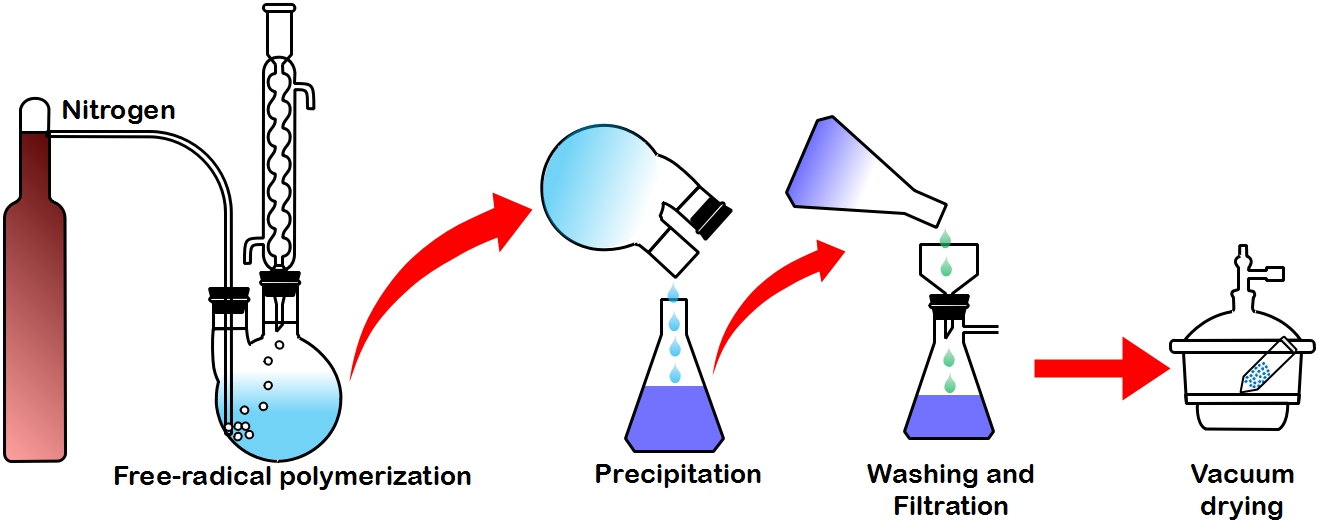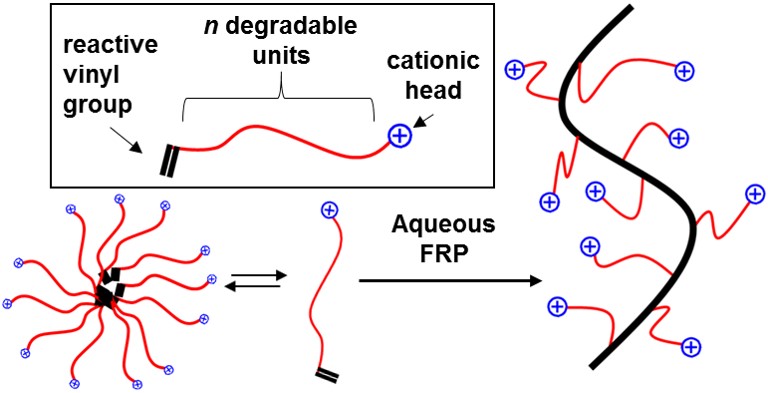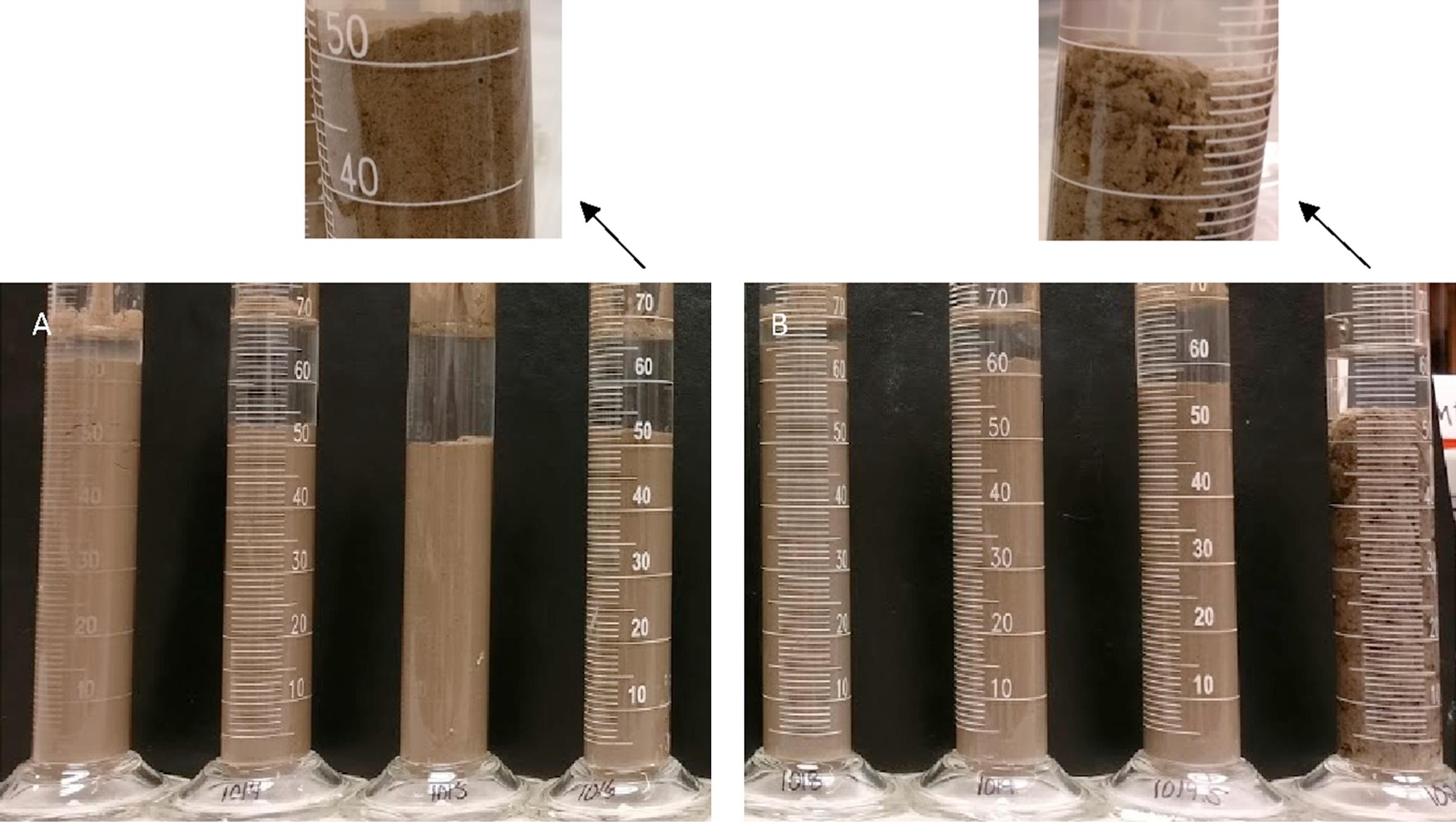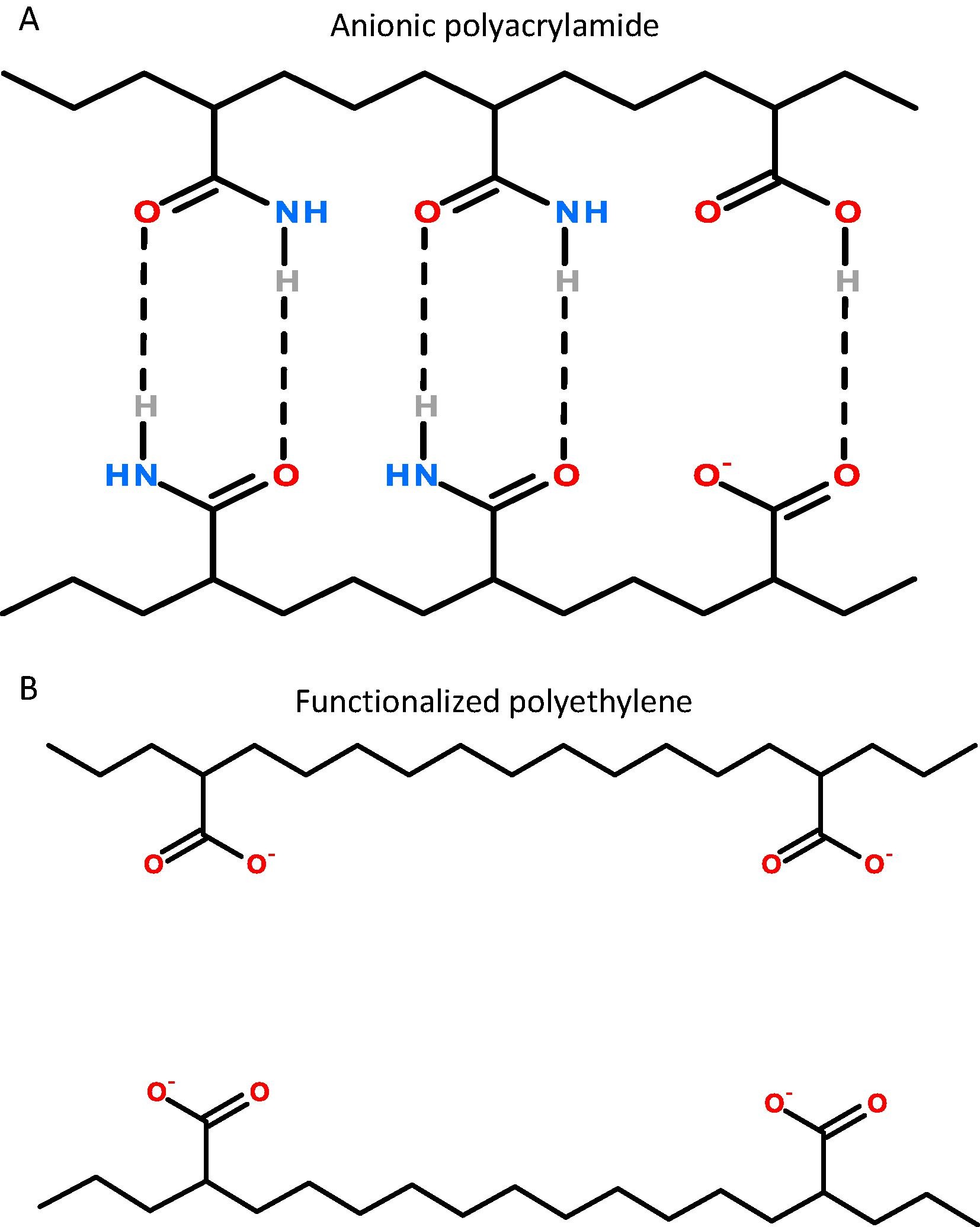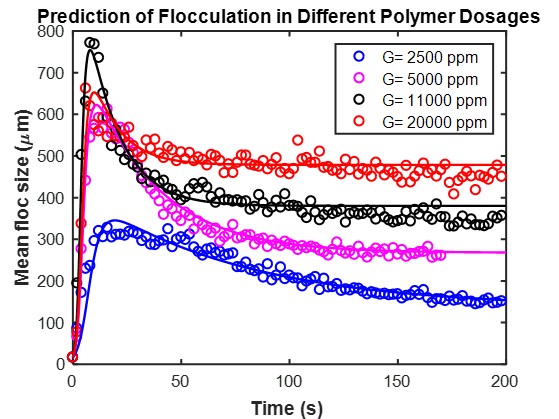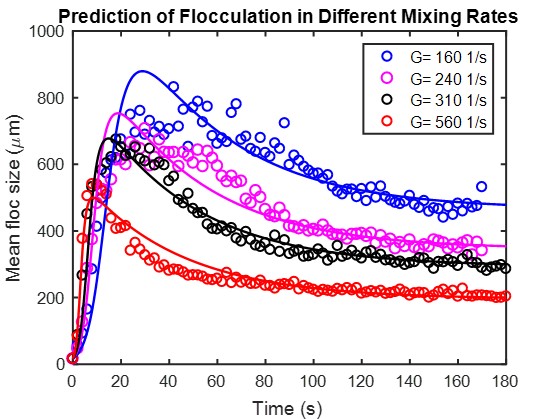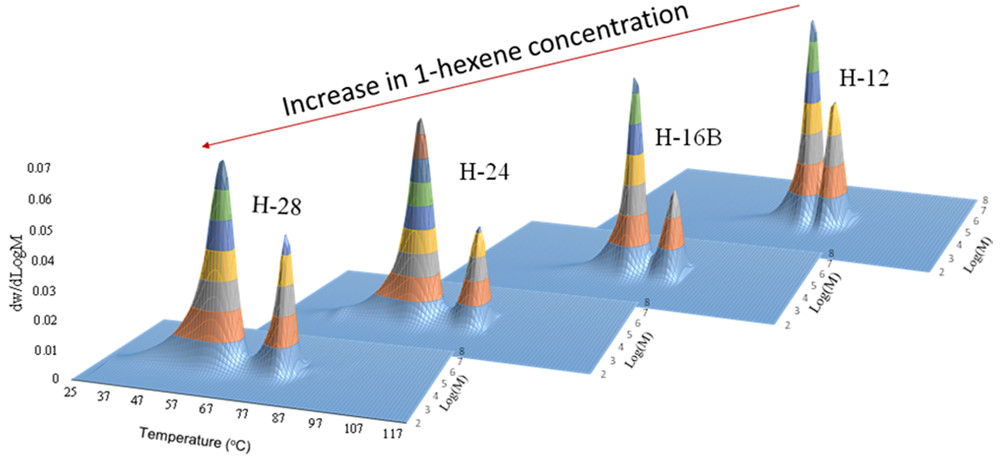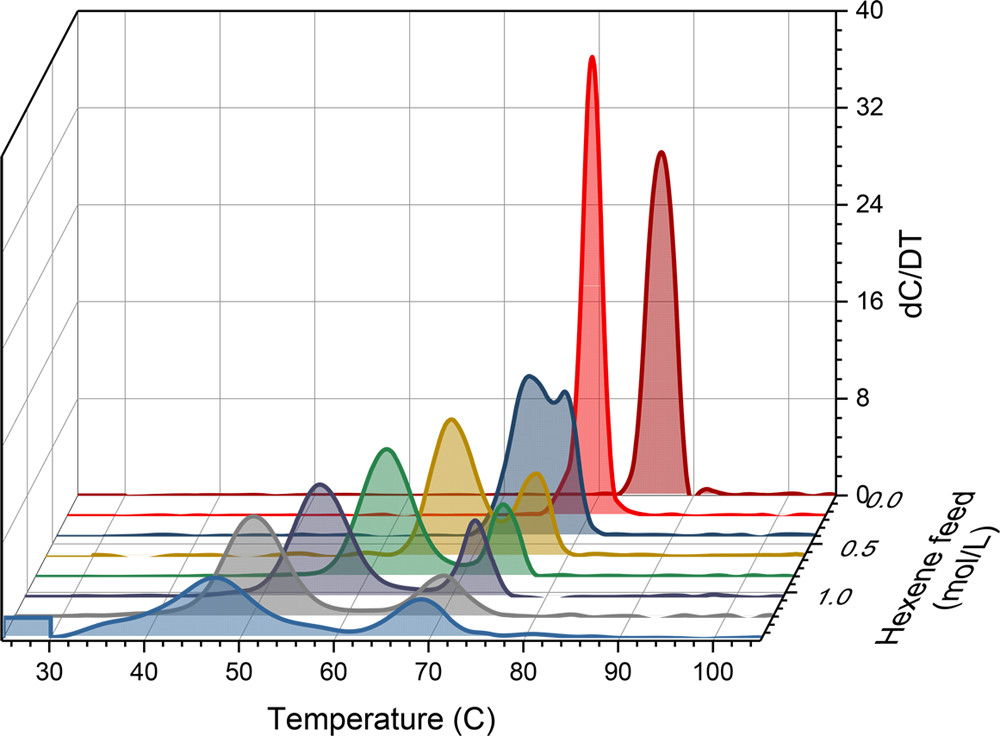Research
Flocculants for Oil Sands Tailings Treatment
Efficient dewatering of oil sands tailings is of extreme importance to reduce the environmental footprint of oil sands operations. This research theme involves development of various water soluble polymers to dewater, consolidate, and densify the oil sands tailings. Our group has developed a series of high molecular weight, multifunctional copolymers, terpolymers, and graft polymers to flocculate the tailings. We have also synthesized a library of bio-based flocculants based on chitosan, amylopectin, ϵ-caprolactone, and lactide. We also explore thermosensitive, pH-sensitive, polyelectrolytes, and hydrophobically-modified polymers. Our major synthesis is based on free radical polymerization, and controlled ATRP and reverse-ATRP techniques. Our interest lies in tunable synthesis and structure-performance relationship of these flocculants.
Modeling the Floc Formation Phenomenon
Solid-liquid separation efficiency in oil sands tailings is largely affected by the type and dosage of flocculants, mixing conditions, flow rate, solids concentration, and microstructure of flocculants (i.e. molecular weight, composition, charge etc.). These variables affect the floc evolution in time, mode of flocculation, aggregate size, density, dewaterability, compressibility etc. These are key parameters in the assessment of flocculation performance and the subsequent dewatering and consolidation behavior. We are interested in developing mathematical models to predict flocculation process in oil sands tailings treatment. Population balance models are generally used to describe change in the size and distribution of particles or aggregates in a system. We monitor the flocculation experiments by the focused beam reflectance measurement (FBRM) and use these experimental results to train and validate our model.
Inline Flocculation of Oil Sands Tailings
Since the ongoing extraction of bitumen continues, accumulation of oil sands tailings continue to increase and require expansion of tailings storage areas. We are addressing this challenge by developing inline flocculation system that can continuously flocculate the tailings. Inline static mixers that are compact, low cost, consume less power, and do not have moving parts, are used for this purpose. This research aims to develop operating guidelines by investigating tailings flocculation using inline static mixers.
In-situ Nanocomposites of Polyolefins
In this research, we aim to improve the mechanical properties of polyolefins using modified cellulose nanocrystals (CNCs). We are exploring diverse modification pathways to increase compatibility between CNCs and the hydrophobic matrix. Our one of the attempts include achieving covalant bonding between the filler and matrix that can significantly increase the mechanical properties of the composite compared to that made by polymer post-processing.
Mathematical Modeling of Polymerization Reactors and Polymer Microstructures
Mathematical modeling of polymerization reactors and polymer microstructures offers a unique and precise way of predicting process and product behavior. We implement advanced mathematical, statistical, and engineering methods to predict the polymerization processes in steady and dynamic states. Modeling techniques we implement include: population balances, method of moments, and Monte Carlo. We also develop models to predict the polymer microstructure and ultimately estimate the end properties of the polymers. Previously, we have successfully modeled ethylene polymerization in CSTR and semi-batch reactors.
Polymer Microstructure Characterization
We employ Crystallization Elution Fractionation (CEF), Temperature Rising Elution Fractionation (TREF), Temperature Gradient Interaction Chromatography (TGIC), Solvent Gradient Interaction Chromatography (SGIC) and High-Temperature Gel Permeation Chromatography (HT-GPC) to characterize microstructure of polymers. These characterization techniques can measure short chain- and long chain-branching, chemical composition distribution (CCD), and molecular weight analyses. We use these techniques to further model the polymerization processes to obtain desired properties of the polymers.

